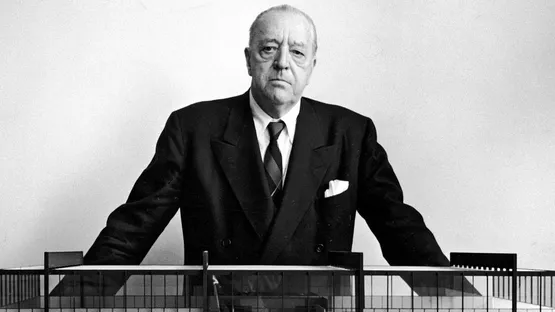Licensing is a fundamental step in many professions, including architecture. It ensures that professionals meet certain standards and can legally practice their craft. However, history has shown that some of the most famous architects bypassed this formal route, achieving lasting influence without ever obtaining an official license. Below are six iconic architects who defied conventional paths and created some of the world’s most renowned architectural works—without ever being licensed.
1. Frank Lloyd Wright: The Maverick of Modern American Architecture
Frank Lloyd Wright is perhaps the most famous American architect of all time. Known for masterpieces such as Fallingwater and the Guggenheim Museum, his organic style transformed residential and public architecture in the 20th century. Despite his towering reputation, Wright never completed the licensing process.
Wright’s career took off early when he worked for Louis Sullivan, the “father of skyscrapers.” By the time licensing laws were formalized, Wright was already a household name, well beyond needing legal validation. His approach to architecture focused on harmony with nature, and his buildings often broke with conventional design and construction practices—reflecting his free spirit and independence.

2. Le Corbusier: The Self-Taught Visionary of Modernism
Le Corbusier, the Swiss-French architect who pioneered the International Style, is another legend who never held a formal license. His works, including the Villa Savoye and the Unité d’Habitation, revolutionized urban planning and residential design by emphasizing simplicity, functionality, and modern materials.
Without formal training in architecture, Le Corbusier was a self-taught architect who began his career as a painter and draftsman. His refusal to follow the norms of formal education mirrored his designs, which boldly rejected classical styles. His ideas became blueprints for modern urbanism, even without the stamp of a license.
3. Tadao Ando: From Boxing to Minimalist Architecture
Tadao Ando’s journey into architecture is as unconventional as his work. The Japanese architect, known for his minimalist use of concrete and light, never pursued formal education or a license in architecture. Before discovering architecture, Ando was a professional boxer.
His raw, self-taught approach to design is evident in works like the Church of the Light and Row House in Sumiyoshi. Ando’s unique style, which blends traditional Japanese aesthetics with modern minimalism, has earned him international acclaim, including the prestigious Pritzker Prize, further proving that formal credentials are not always necessary for success.
4. Luis Barragán: Mexico’s Master of Color and Light
Luis Barragán, one of Mexico’s most celebrated architects, never obtained an official architectural license. His bold use of color, light, and texture can be seen in iconic works like Casa Barragán and the Torres de Satélite. Barragán’s designs combined modernist principles with traditional Mexican elements, creating spaces that felt both spiritual and serene.
Although he lacked formal licensure, Barragán’s work left an indelible mark on architecture, earning him the Pritzker Prize in 1980. His ability to blend the contemporary with the cultural showed that an architect’s influence is not necessarily tied to formal qualifications.
5. Carlo Scarpa: The Italian Master of Detail
Carlo Scarpa’s intricate, highly detailed designs made him one of Italy’s most respected architects. Scarpa was known for his sensitivity to materials and craftsmanship, often blending modernism with historic restoration. Yet despite his architectural studies, he never passed Italy’s licensing exams and was thus never formally certified.
Scarpa’s most renowned works, such as the Brion Cemetery and Museo di Castelvecchio, are celebrated for their artistic depth and attention to materiality. His lack of a license didn’t prevent him from gaining international recognition as a master of architectural detail and a bridge between tradition and modernism.

6. Ludwig Mies van der Rohe: “Less is More”
Ludwig Mies van der Rohe, a titan of modernist architecture, also never obtained a formal license. A key figure behind the International Style, his minimalist approach—best known through iconic buildings like the Barcelona Pavilion and the Farnsworth House—has shaped the way we think about space, materials, and simplicity.
Mies began his career in Germany and later moved to the United States, where he continued to push the boundaries of architectural design. Despite his massive impact, he never completed the necessary requirements to become a licensed architect. Like the others on this list, his legacy transcended the need for formal qualifications, as his work became the blueprint for modern architecture
Why They Never Got Licensed—And Why It Didn’t Matter
What these six architects share is a refusal to be confined by conventional structures—both in terms of design and professional qualifications. Each of them followed their own path, often self-taught, and their creativity flourished because they were not constrained by formal requirements.
In many cases, licensing laws either didn’t exist or were still developing when these architects were already practicing. More importantly, they each demonstrated that a vision, an understanding of design principles, and the ability to execute innovative ideas are more critical to architectural success than a formal certification.
Their careers serve as a testament to the power of passion, creativity, and individual vision in shaping the built environment. While licenses are crucial today for legal and safety reasons, these trailblazers remind us that true architectural greatness comes from daring to innovate outside the bounds of convention.
